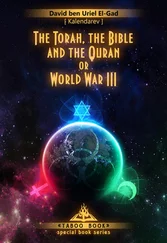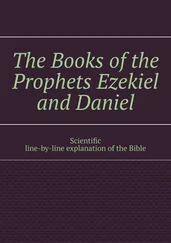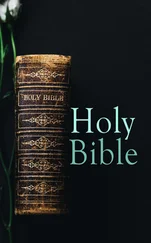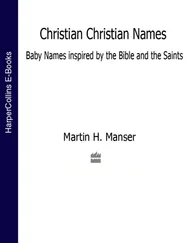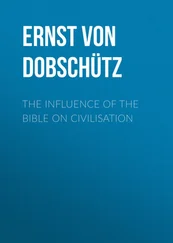Prologue Orientation to Multiple Bibles and Multiple Translations
Chapter Outline
Chapter Overview
The Bible as a Complex Product of Many Hands
The Different Scriptures of Judaism and Christianity
Basics on Bible Translations
Bible Abbreviations, Verses, and Chapters
Conclusion on Critically Analyzing a Page of Your Own Bible
Prologue Review
Resources for Further Study
Appendix 1: Translation and Paraphrase Comparison of Isa 52:13–15
Appendix 2: Characteristics of Select English Translations of the Bible
This prologue helps you learn the basic characteristics and background of the Bible that you will use across the course. As you will see, not all Bibles are the same. Judaism and different forms of Christianity include different books in their Bibles. Also, ancient manuscripts of the Bible diverge from one another, and contemporary translations follow different manuscript readings and translation practices. By the end of this chapter you should know the differences between the bibles of Judaism and Christianity, as well as the relationship of the Islamic Qur’an to both sets of scriptures. You will also learn how the study of different readings of ancient manuscripts of the Bible, “textual criticism,” and advances in knowledge of ancient languages have led to major progress in translation of the Bible since the King James Version was completed in 1611. Finally, you will learn some basic things to keep in mind in choosing and using an up-to-date English translation of the Bible.
 EXERCISES
EXERCISES
1 Using the parallels provided at the end of the chapter in Appendix 1, compare the translations of (and paraphrase) Isa 52:13–15. What differences do you notice?
2 Take a look at two pages of a biblical book in your Bible. Make a list of all types of elements on those pages aside from the actual text of the Bible. Using the discussions in this chapter, identify where those elements came from.
The Bible as a Complex Product of Many Hands
We start here with your Bible – the book that you hold in your hands. A major aim of this chapter, and this Introduction as a whole, is to give you a deeper appreciation of the way this seeming simple book is actually the complex product of centuries of human work. The last stages of that work are already obvious when you take a closer look at the Bible you hold in your hands. Notice the type of cover it is packaged in (unless you are working with a digital copy!). Look at the typeface used for the biblical text and various aids that are provided for you as a reader (depending on your particular Bible): paragraph divisions, headings for different Bible passages, and maybe some cross-references to other Bible passages or brief explanatory notes. None of these aspects come from ancient manuscripts. They are aids that the publisher of your Bible provides to you as a reader.
These parts of your Bible, however, are just the first set of ways that your Bible has been worked into the form you have it now. Take, for example, the chapter and verse numbers in your Bible. None appear in ancient manuscripts. They were added to the text over a thousand years after it was written. Or consider the translation in your Bible. The biblical texts were originally written in Hebrew, Aramaic (an ancient language similar to Hebrew), and Greek. We will see in this prologue how every translation of these ancient texts involves significant style decisions, reasoned guesses, and compromises. In addition, we have multiple, handwritten copies of ancient biblical manuscripts. These ancient copies disagree with each other. As a result, a translator must not just decide how to translate a given biblical verse. She or he also must choose which manuscript reading to translate in the first place. And all this does not even get into the centuries-long process that produced these ancient Hebrew, Aramaic, and Greek biblical texts, or how they were collected into specific scriptural collections by Jews and Christians. That long process will be the focus of much of the rest of this Introduction .
For now we are focusing on some of the elements that were added to those texts in the Bible before you, many of which distinguish one Bible that you might find from another. These include what books are included and in what order, what kind of translation is used, and how translators chose, for a given phrase or word, to follow a reading in one ancient manuscript versus another. This prologue discusses these elements in turn, aiming to help you be a more informed user of your Bible.
The Different Scriptures of Judaism and Christianity
To begin, it is important to recognize that the Bibles of different faith communities contain somewhat different books, put those books in different order, and call their Bibles different things. Your Bible reflects one of those collections or a mix of them. These are often referred to as different “canons” of the Bible, with “ canon” meaning a collection of books that are recognized as a divinely inspired scripture by a given religious community. Such books are recognized as “ canonical.”
The Jewish people calls its Scriptures the “ TaNaK” (or “ Tanakh,” with the kh pronounced like the ch in Bach). Tanakh is a word formed out of the Hebrew names of the three main parts of the Jewish Bible: Torah(Genesis, Exodus, Leviticus, Numbers, and Deuteronomy), Neviim (“prophets”), and Ketuvim (“writings”). See the box on “Contents of the Hebrew Bible/Tanakh/Old Testament” for an overview of the contents of each of these three parts. Judaism focuses particularly on the Torah, otherwise known as the Pentateuch, with most synagogues reading the Torah’s five books all across the year, starting with Genesis at the outset of the Fall (the Jewish New Year) and concluding with Deuteronomy twelve months later. Jews certainly read other parts of the Tanakh, for example singing psalms (part of the “Writings”) and reading portions of the “Prophets” to accompany the Torah reading. Nevertheless, the Torah takes pride of place within the Jewish Bible, while other parts of the Tanakh are often seen as a commentary on it. In accordance with an emphasis in Judaism on temple and purity, the overall Tanakh concludes on a hopeful note, as 2 Chronicles anticipates a new rebuilding of the Temple (2 Chr 36:22–3).
The Christian version of these scriptures, the “ Old Testament” (OT), is part of a two-part Bible that also includes specifically Christian scriptures, the New Testament(NT). Later in this Introduction (starting in Chapter 9) we will look more closely at the writings in the New Testament. For now, we focus on similarities and differences between the Christian Old Testament and the Jewish Tanakh. Most importantly, these similar sets of scriptures are organized differently. Though both the Tanakh and the Christian Old Testament start with the biblical narrative-historical books of Genesis to 2 Kings, the Christian Old Testament then goes straight to the parallel narration of that history in Chronicles, Ezra, and Nehemiah. It then sequences the other biblical books in the order of their traditional authors, starting with the book of Job (an early Edomite sage), and moving through Psalms (David as traditional author), Proverbs, Ecclesiastes, and Song of Songs (Solomon as traditional author), and on to the major (Isaiah, Jeremiah, Ezekiel) and minor (Hosea, etc.) prophets. As in the case of the Jewish Tanakh, the ending of the Christian Old Testament is revealing. It concludes with the last chapter of Malachi, a prediction of the second coming of Elijah (Mal 4:5). This ending leads nicely into the first book of the New Testament, the Gospel of Matthew, which describes the coming of John the Baptist, who is clothed like Elijah, and prophesies the coming of Jesus (Matt 3:1–6).
Читать дальше
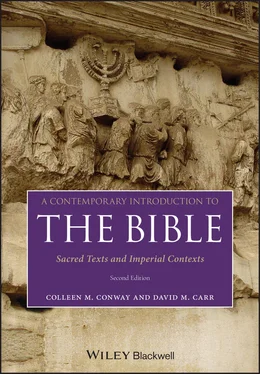
 EXERCISES
EXERCISES